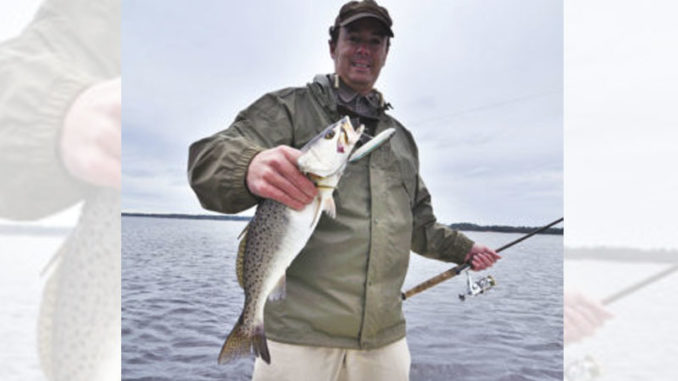
Georgetown specks turn to topwater
As the temperatures finally drop to comfortable levels, the inshore bite begins to take a turn for the better. And that includes the topwater bite for speckled trout.
For anglers around Georgetown, S.C., who love to catch speckled trout, it’s time to sharpen the hooks on topwater baits. Every fall, that bite takes off. And it’s the most exciting way to connect with a yellowmouth.
Specks rank high on the hit list of Jeff Latig of Living Water Guide Service, when the groceries get thick in waters around Georgetown and the fish get hungry.
“Once September comes, the abundance of shrimp and baitfish in the area makes the trout fishing pretty good,” said Lattig (843-997-4655). “It’s a great opportunity to throw topwater. And the best time is at dawn and dusk.”
September is prime time for topwater speckled trout
Trout prefer cooler waters. And the combination of cooler waters and periods of low light makes September a prime time to find trout filling up at their normal breakfast hangouts. In Georgetown, these stretch from Debordieu south to McClellanville and Bulls Bay. Anywhere recreational shrimp baiters are ganged up will be good places to look for surface-feeding trout. The grassy banks, oyster points and creek mouths near North Inlet, Muddy Bay and Cape Romain are going to be good places to look for trout.
Similar areas across the Carolinas are also great for topwater fall specks.
“I work the back of the eddies of sloughs and the oyster rips,” Lattig said. “Anywhere you normally find trout ambushing bait, you can expect trout to feed upward. One of the best techniques in the fall is to look out for the birds. They will tip you off to a school of feeding trout.”
When using spinning gear, Lattig will use a Heddon Zara Spook in different sizes, depending on how big the fish are. He will also vary up which topwater baits he uses depending on the water depth and if the fish are short-striking.
“If the fish are short-striking, I will rig up a hopper-dropper (rig) with a Chug Bug-type topwater with 18 inches of line and a circle hook holding a DOA CAL or a DOA or VUDU shrimp,” he said.
Lattig uses the popper just like a cork, popping it a couple of times and letting it sit.
“A lot of times, they will take the dropper. And other times, they take the popper. It’s a good way to get them to eat,” he said.



Be the first to comment